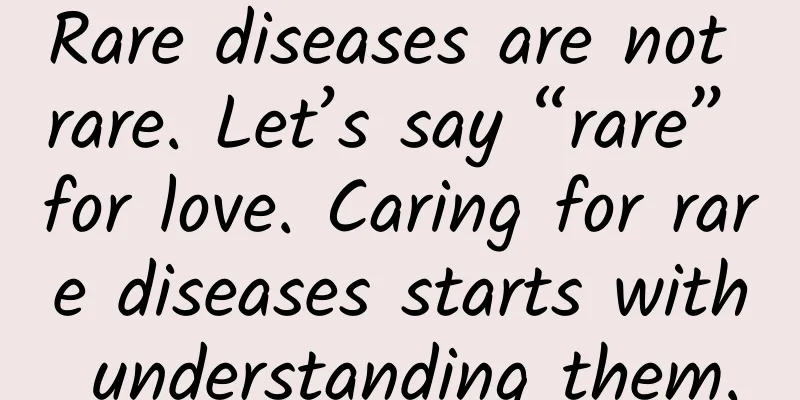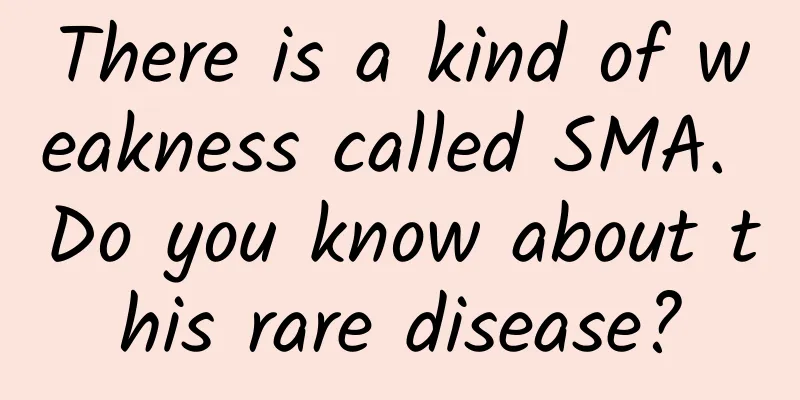Rare diseases are not rare. Let’s say “rare” for love. Caring for rare diseases starts with understanding them.

|
The book "The Code of Life" states that according to statistics, the average person is born with about 7 to 10 sets of defective genes and carries 2.8 pathogenic genes for recessive genetic diseases. In other words, each of us is a carrier of a rare disease gene, and as long as humans have life, there will be the possibility of developing rare diseases. 1. What is a rare disease? In my country, diseases with a neonatal incidence rate less than 1/10,000, a prevalence rate less than 1/10,000, and a number of patients less than 140,000 are called rare diseases. Even if the probability is one in ten thousand, it is 100% suffering for every rare disease patient and family. February 28, 2022 is the 15th "International Rare Disease Day". This year's theme is "Share the Color of Your Life". Porcelain Doll, Moon Child, and Butterfly Baby, these three fairy-tale names correspond to three rare diseases: osteogenesis imperfecta, albinism, and epidermolysis bullosa, which are also several "common" rare diseases. 2. The diagnosis of rare diseases is not the most difficult thing. The real difficulty lies in treatment. Among the more than 7,000 known rare diseases, less than 5% have effective treatments. Among the 121 diseases included in China's first batch of rare disease catalogs, only about 60% are "treatable with medicines." There is currently a gap in the treatment of most rare diseases. At present, more than 60 rare disease drugs have been approved for marketing in my country, and more than 40 have been included in the national medical insurance catalogue, involving 25 diseases. Spinal muscular atrophy (SMA), which became known to the public because of the "sky-high price" of 700,000 yuan per dose of medicine, is also one of the rare diseases. 3. Preventing rare diseases through three levels of prevention About 80% of rare diseases are caused by genetic defects, 50% occur at birth or in childhood, 30% of them do not survive beyond the age of 5, and 35% of newborns die from rare diseases. Early screening, early diagnosis, and early treatment, which has become a consensus in the field of cancer management, also applies to the diagnosis and treatment of rare diseases. How to prevent the occurrence of rare diseases through tertiary prevention? Primary prevention - pre-pregnancy. Strengthen premarital examinations, conduct eugenics genetic counseling before pregnancy, screen high-risk groups for genetic disease carriers, conduct comprehensive investigations, and prevent the disease from the source. If a couple has already given birth to a child with a rare disease, or has been confirmed through testing to carry a gene that causes a rare disease, they can use pre-implantation genetic testing (PGT, the third-generation IVF) to assist in reproduction, analyze the genetic material of the embryo, and select healthy embryos for implantation, in the hope of giving birth to a completely healthy child. Secondary prevention - prenatal. Prenatal examinations can screen out high-risk pregnant women, and timely prenatal diagnosis and screening can prevent the birth of children with rare congenital defects. Level 3 prevention - newborns. Some rare diseases, such as some genetic metabolic diseases and endocrine abnormalities, can be discovered in time through newborn disease screening, treated as early as possible, and the damage can be minimized. For example, comprehensive screening for phenylketonuria and congenital hypothyroidism should be carried out, follow-up, diagnosis, treatment and intervention of positive cases in newborn disease screening should be strengthened, and the treatment rate of confirmed cases should be improved. Rare diseases are not rare, they are around us, and everyone may have genetic defects. If a seemingly healthy couple happens to carry the same rare disease gene, they have a 25% chance of giving birth to a "rare" baby. Let the whole society pay attention to rare diseases and make rare diseases even rarer. |
<<: What are the benefits and functions of dried shrimp? How to make dried shrimp and seaweed soup
Recommend
How long is the best time to breastfeed and what to pay attention to
Maybe we all have encountered the situation of ha...
My menstrual blood is black, what should I do?
Menstruation is a very normal physiological chara...
What medicine should women take if they have upper body heat and lower body cold?
Under normal circumstances, kidney water should g...
How to treat lower body odor effectively
In summer, if a woman has a strong odor from her ...
6 most practical tips for whitening and sun protection
The first step: continuous whitening The ultravio...
Why do I have stomach pain a few days after a miscarriage?
Key reminder: Painless abortion is the most commo...
How to do HPV biopsy
HPV virus is a viral infection with a very high m...
After the beginning of autumn, many people ignore a small thing that can really hurt your health if you don't do it right
This summer has reached a new high. Although it i...
How long does it usually take to rest after miscarriage?
Since a woman's vitality will be greatly dama...
What causes back pain after medical abortion?
Many women may not be prepared, so they decide to...
What are the symptoms of premenopause in women?
For some middle-aged and elderly women. During me...
What vegetables are good for menstruation to replenish blood?
During menstruation, women's bodies are very ...
A diagonal hard stripe on the left lower abdomen of a girl
The left lower abdomen refers to the lower left p...
What should I pay attention to if the foramen ovale is not closed?
The development of the fetus is very complex, and...
Brown discharge after period
Many women experience brown discharge from their ...









